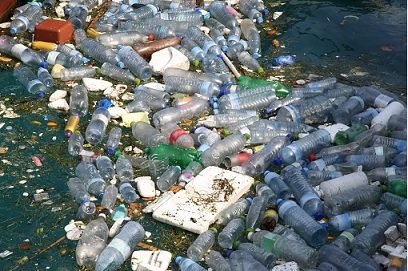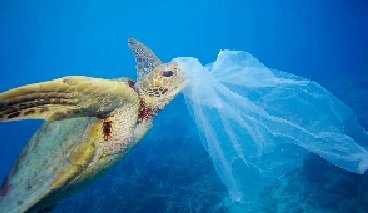Plastics: a modern life poison
Plastic materials pervade every area of modern life. It is estimated that during the first ten years of this century, almost as much plastic was manufactured as during the whole of the last century. A substantial amount of the world’s crude oil is used in the production of plastics. Furthermore plastic waste is a huge environmental issue due to the harmful chemicals and greenhouse gases that are emitted when it is incinerated. Alternatively, if buried deep in landfill sites, harmful chemicals can leach into the soil, contaminating ground water, and floating plastic waste can potentially survive for thousands of years in water, potentially serving as a transportation device for invasive species, disrupting habitats.

Plastic debris in water can also be laced with chemicals which, when ingested, can injure or poison. In addition to effects on habitats and wildlife, chemicals that are added to plastics (often to provide desirable performance characteristic such as hardness or flexibility) are also absorbed by the human body. They can therefore pose serious health risks, not just for those exposed during the manufacturing process, but for the population in general.

Diethylhexyl phthalate (DEHP), a plasticising chemical, is a recognised endocrine disruptor, (a chemical that may interfere with the body’s hormone system) which can increase the risk of birth defects and other developmental disorders. Children are particularly vulnerable to these toxic chemicals and their capacity to interfere with hormonal systems. By altering feedback loops in the brain, thyroid, gonads, pituitary, and other parts of the endocrine system, endocrine disruptors can affect overall development and increase the risk of cancer later in life.
Polybrominated diphenyl ether (PBDE) is another ingredient widely used in many plastic products that has also been associated with numerous health conditions. One study measuring the levels of PBDE in children’s blood found that the higher the levels, the significantly poorer the child's cardiovascular responses to stress, and the worse the parental and self-reported anger in the child, indicating both cardiovascular and psychological effects of PBDE exposure. There is also increasing evidence that PBDE exposure in childhood can increase a child’s susceptibility to autism, as well as long-lasting behavioral abnormalities, particularly deficits in motor activity and cognition.

However other chemicals used in plastic were, at least for a time, considered safe to use. For example for many years the use of bisphenol A (BPA) in plastics was considered to be safe, however it is currently under intense scrutiny, as it has been demonstrated that it is also an endocrine-disrupting compound. In France, as of 2015, BPA was completely banned from use in any form of food contact material, however it is still freely marketed in other parts of the world, or has simply been replaced with other substances, such as bisphenols S or F, which have also been shown to have endocrine disrupting actions.

Plastics play a role in almost every aspect of food production and preparation. Our food is often in direct contact with plastic, from being processed with plastic-covered equipment to being packaged in plastic containers or plastic lined tins. In the home food is stored and often reheated in plastic containers. It has long been known that leaching, or migration, of chemicals takes place from plastic containers in the food we eat. However small the quantities of these toxins, the plastic additives potential to cause enormous risks to health means that consumers should be aware of the risks that plastics pose.